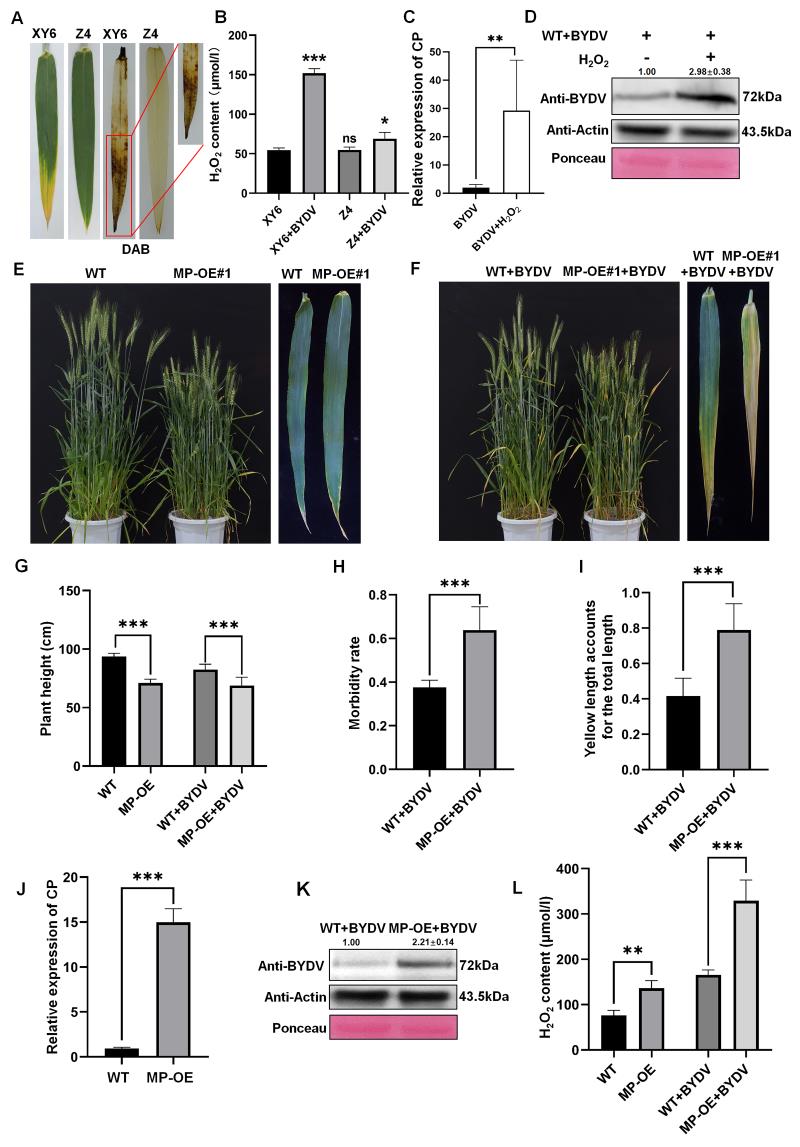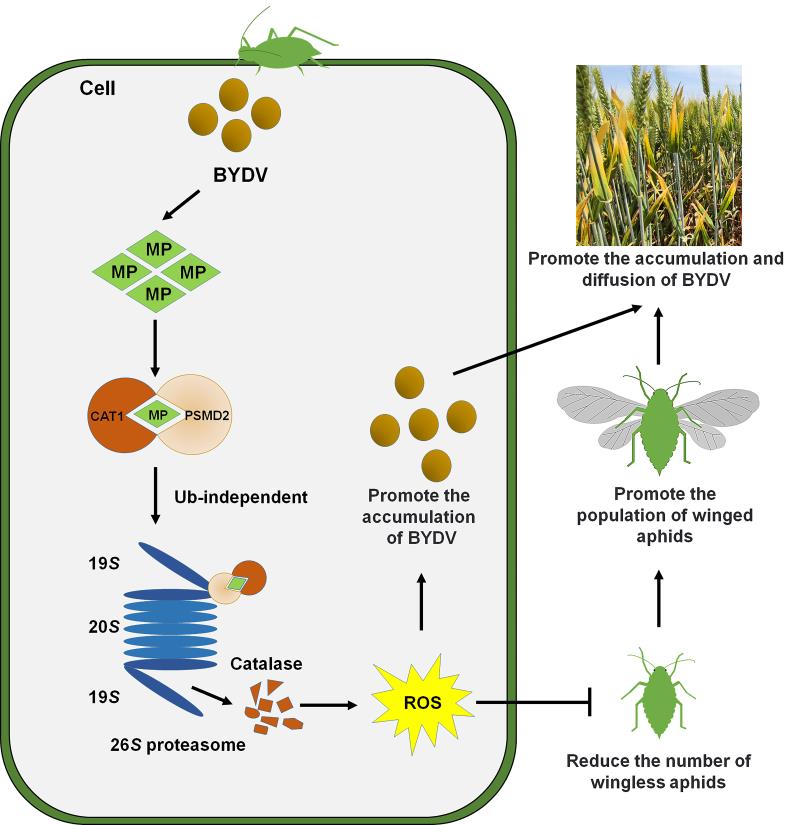On March 7th 2024, the Plant Virus and Viral Gene Engineering Technology Research Team from our college published an online research paper titled "A viral movement protein targets host catalases for 26S proteasome-mediated degradation to facilitate viral infection and aphid transmission in wheat" in the journal Molecular Plant. Tian Shuyuan, a Ph.D student of our college, is the first author of this paper. Prof. Wu Yunfeng and Associate Prof. Zhao Lei are the co-corresponding authors.

Wheat yellow dwarf disease caused by Barley Yellow Dwarf Virus (BYDV) infection is an important disease that affects wheat-growing areas in Northwest, North, and Huang-Huai (Huang He river and Huai He river) regions of China. After autumn seedlings become infected, the disease quickly spreads through aphids migrating and transmitting the virus, resulting in wheat yellowing, dwarfing, reduced yields, and even complete crop failure. This disease is known as the "cancer" of wheat crops. However, due to a lack of understanding of the pathogenesis of the virus and the mechanism of aphid transmission, disease prevention and control have long been constrained.
Maintaining Reactive Oxygen Species (ROS) homeostasis is crucial for the growth and survival of virus-infected plants. Many viruses can disrupt the ROS balance in their host plants, leading to yellowing and necrosis symptoms. On the other hand, viruses can also promote their own infection and accumulation by controlling plant ROS homeostasis. Catalase (CATs) is one of the oldest antioxidant enzymes found in almost all aerobic organisms. This enzyme breaks down H2O2 produced by cellular metabolic activities into water and oxygen, maintaining ROS homeostasis in plants.

Figure 1. Overexpression of MP promotes BYDV infection and the appearance of yellow dwarf phenotype
This study found that overexpression of the virus's Movement Protein (MP) significantly promotes the accumulation of ROS in wheat, leading to the appearance of yellow dwarf phenotypes. Conversely, to resist the expansion of virus infection, wheat utilizes its own TaCATs to suppress viral infection. In response, the virus overcomes the inhibition of TaCATs by promoting the interaction between the proteasome receptor protein PSMD2 and TaCAT1 through the 26S proteasome pathway, thereby facilitating the degradation of TaCATs. The degradation of TaCATs disrupts the ROS balance in wheat, leading to increased ROS levels. The elevated ROS levels promote the accumulation of BYDV while inhibiting the reproduction of vector aphids and promoting the production of winged aphids, which migrate to healthy wheat plants to initiate the next round of transmission.

Figure 2. Schematic diagram of the mechanism of MP protein promoting BYDV infection and transmission
This research was funded by the National Natural Science Foundation of China and the Program for Introducing High-level Foreign Experts of the Ministry of Science and Technology.
Original Link: https://doi.org/10.1016/j.molp.2024.03.004